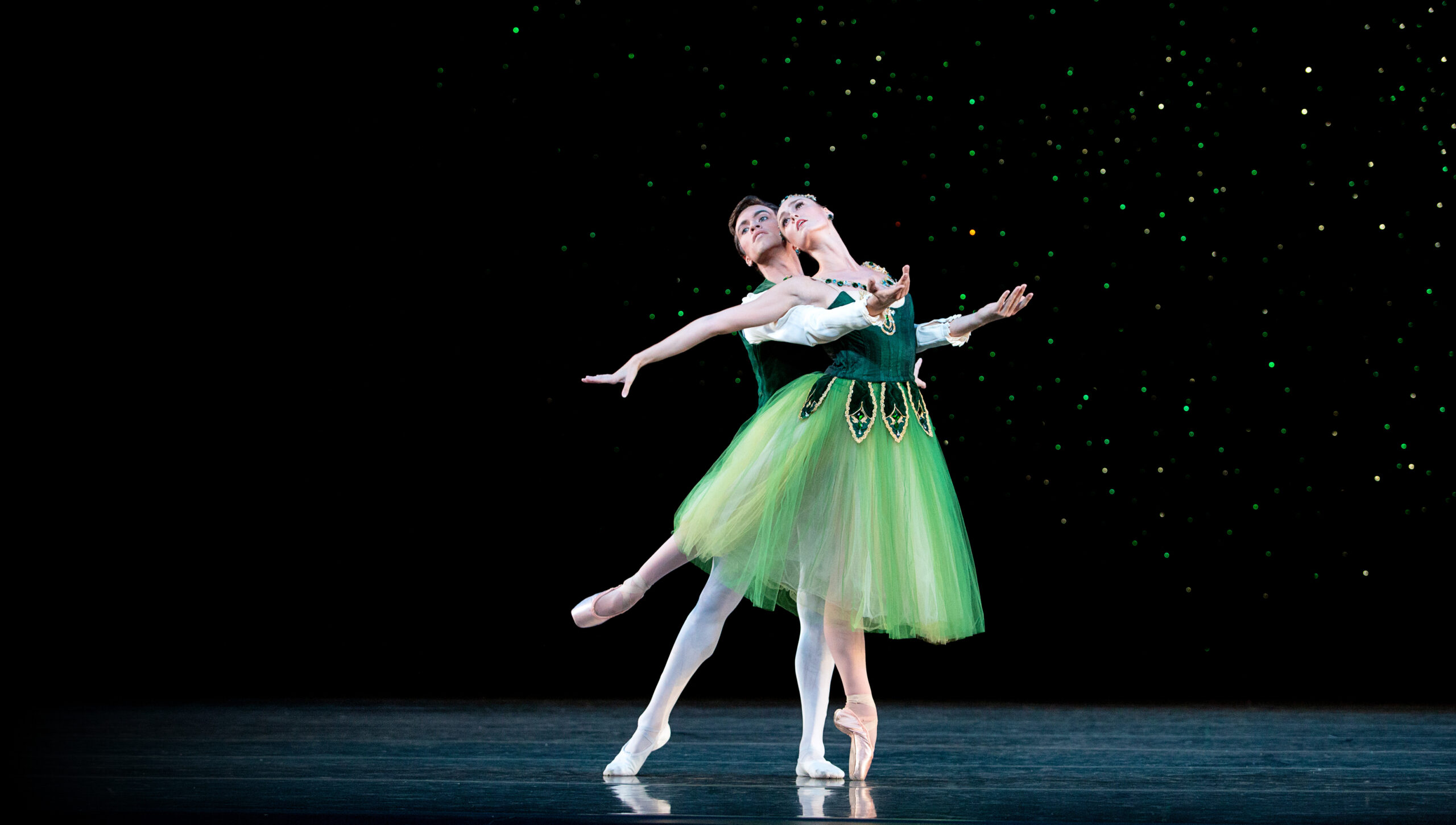Dancing With OCD
Miami City Ballet principal Steven Loch had been dealing with anxiety and intrusive thoughts since his teens. But when he was a corps member at Pacific Northwest Ballet, they became intense enough to make it difficult for him to manage his daily schedule of company class, rehearsals and performances. These feelings were a result of obsessive-compulsive disorder, a chronic mental health condition that, when left untreated, can become extremely debilitating.
“Honestly, I look back and it’s amazing how I got myself up every day after having obsessions and compulsions keep me up at night, and then finally being so exhausted that my body would just collapse at 3 am,” Loch remembers of the period he calls “his worst.”
At the end of the 2013–14 season, Loch decided to take a leave of absence from PNB to focus on recovering from OCD, and, since then, has become a voice of encouragement for others struggling with the disorder. “There is hope that it will get better,” he says. “I’m an example of that.”
What Is OCD?
OCD is characterized by repetitive, disturbing intrusive thoughts (obsessions) and actions aimed at getting rid of the thoughts (compulsions). Obsessions can be anything from a preoccupation with symmetry to a fear of harming yourself or your loved ones, and compulsions can range from repeatedly touching a certain object to mentally reviewing a specific situation. Because of the demanding nature of compulsions and the often-incessant presence of obsessions, OCD can quickly overwhelm a person’s life, often leading to difficulties with daily activities, socializing and/or working. It can sometimes be hard to spot or identify, making it more difficult to get appropriate treatment.
Navigating a Dance Career With OCD
Morgan Rondinelli, a dance instructor at Bloomington, Illinois’ McLean County Dance Association, says she first noticed OCD’s impact on her dancing when she was very young. “When I was little, I had this compulsion where everything had to feel even in my body, so if I turned once to the right, I had to turn once to the left,” she explains. “My right side was better, so I’d have to do extra practice on my left turns and pretend like I wasn’t losing my mind.”
Obsessions and compulsions are distressing enough on their own, but, according to therapist Madeline Ziegler, MA, MHC-LP, dance can sometimes exacerbate OCD symptoms. Ziegler, who uses they/them pronouns, works at Creativity Mental Health Counseling, a New York City–based practice that specializes in treating artists and performers. “When you’re obsessing over getting something to look perfect, or over the way you look, your thoughts are being confirmed by the people around you,” explains Ziegler, who has OCD in addition to treating it. They also say auditions can be especially triggering, given the added stress of striving for perfection and the increased pressure to avoid mistakes.
Loch says that on one occasion, OCD impacted his ability to get through a rehearsal. He recalls training for the USA International Ballet Competition with former PNB principal Karel Cruz: “Tears started falling down. Luckily, with him, I could be more open about this stuff; I definitely did have a moment that was so bad and the intrusive thoughts were so overwhelming to the senses that I couldn’t see through them.”
Treatment and Coping
Exposure and response prevention (ERP) is considered the most effective treatment for OCD. ERP involves deliberately exposing oneself to OCD triggers and working with a therapist to learn and practice healthy and effective coping mechanisms in place of compulsions. Because treatment is a very specific process, it requires time and commitment. It’s not uncommon for individuals to enroll in an intensive program (which can be inpatient, outpatient or virtual) when they first begin to seek help.
This may seem daunting for dancers, especially those with already demanding schedules. But, according to Ziegler, a leave of absence isn’t always necessary when seeking treatment, as long as the dancer doesn’t feel spread too thin and is able to focus on therapy. And, Ziegler says, dancers might even have a unique leg up on managing OCD because of their inherent discipline and perseverance. “Treatment for OCD takes a lot of resilience and mental strength,” they say. “That’s something dancers tend to have.”
Finding Respite in Movement
Despite the fact that some aspects of dance may aggravate OCD symptoms, many dancers say that class, rehearsal and performance actually become a welcome respite from their thoughts and compulsions. Additionally, getting regular exercise has been shown to improve mood and overall well-being.
“I’ll get to the end of class and be like, ‘Wow, I forgot what I was worried about an hour ago,’ Rondinelli says. “And I just had an hour of exercise and relaxation.” Loch adds that, because of the difficult feelings he battled during the height of his struggles with OCD, he’s been able to enhance his artistry through a stronger connection with the characters he portrays onstage. “I actually understand, now, deep suffering and sorrow, and that has helped me artistically,” he says. “I can share that and be able to understand that, so my artistic performance is better and reaches people in the audience more deeply.”
OCD Resources
For those who’ve been diagnosed or those who’d like to learn more:
International OCD Foundation: Learn more about OCD and connect with a therapist near you.
NOCD: Learn more about OCD, connect with an OCD specialist and with peers also going through treatment, attend virtual seminars.
Not Alone Notes: Co-founded by dance instructor Morgan Rondinelli, the nonprofit mails words of encouragement to individuals dealing with OCD.
Books:
Talking Back to OCD, by John S. March, MD
The Self-Compassion Workbook for OCD, by Kimberley Quinlan, LMFT
Freedom from Obsessive-Compulsive Disorder, by Jonathan Grayson, PhD





